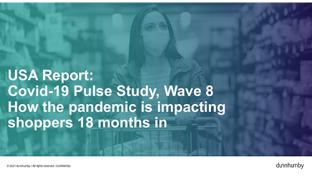Conventional Food Prices Are Catching Up to Organics
Conventional food prices are rising at a much faster rate than organic costs, according to a recent MagnifyMoney study that reviewed weekly retail pricing data from the U.S. Department of Agriculture (USDA).
Even though organic foods overwhelmingly cost more than conventional, the data shows that could change in the future. Since 2019, prices for select conventional meats, dairy items, fruits and vegetables have risen by an average of 13.9% — 12 percentage points more than the 1.6% growth in costs for organic varieties.
Other key findings:
- On average, non-organic meat prices are rising faster than costs for conventional fruits and veggies. Prices across the selected non-organic varieties of produce items have increased an average of 13.1% over the past two years, compared with a 15.6% rise across meat product prices in the same period.
- Though certain cuts of meat have seen price drops, they haven’t been nearly as significant as cost increases. Among the beef, chicken and pork cuts with the greatest two-year hikes, prices have risen between 43.8% and 110.9%, versus decreases of 17.1% to 41.2% across the meat prices that fell the most in the same period.
- Despite rising conventional prices, organic foods are still more expensive. Of the produce prices examined, sweet onions are the only item for which the conventional price is higher than organic cost — 12 cents more per pound, or 9.8%.
Amid rising grocery prices, 90% of consumers said that price is the most important purchase driver for fresh items, according to Deloitte's third annual report on the future of fresh food. Eighty-two percent of consumers also believe that fresh food prices have increased more than is justified.
In addition to worrying about in-store prices, consumers are being warned about how much they pay for groceries online. A MIT Sloan School of Management study revealed potential gaps in price-setting algorithms for online retailers, showing that prices set by algorithms might not be the lowest or best for shoppers. The researchers said that continual adjustments result in fluctuating prices across different times and geographies.
New York-based MagnifyMoney, launched in 2014 and acquired by LendingTree in 2017, aims to help people lead financially healthy lives, providing consumers with free finance information, tools and calculators.







